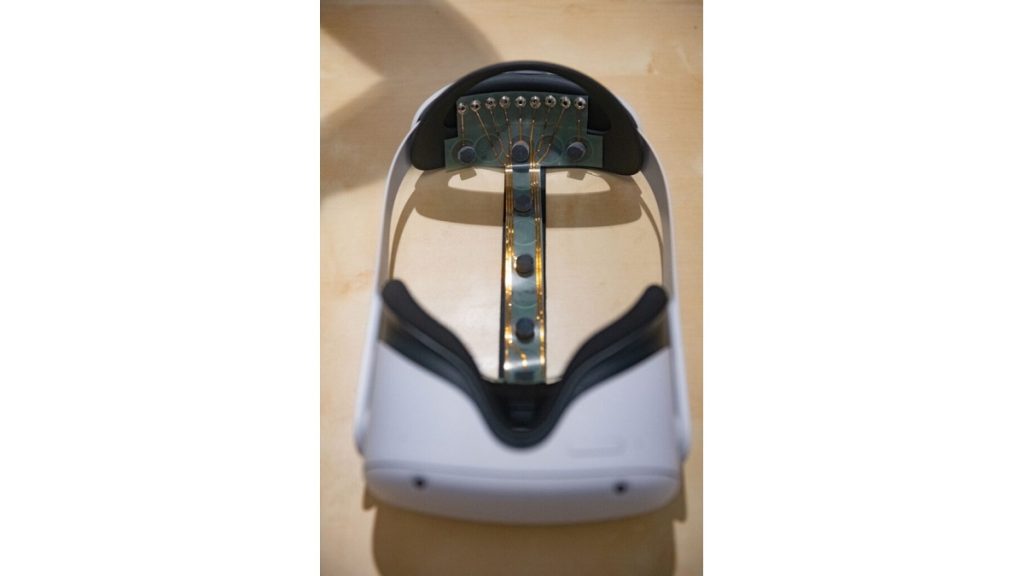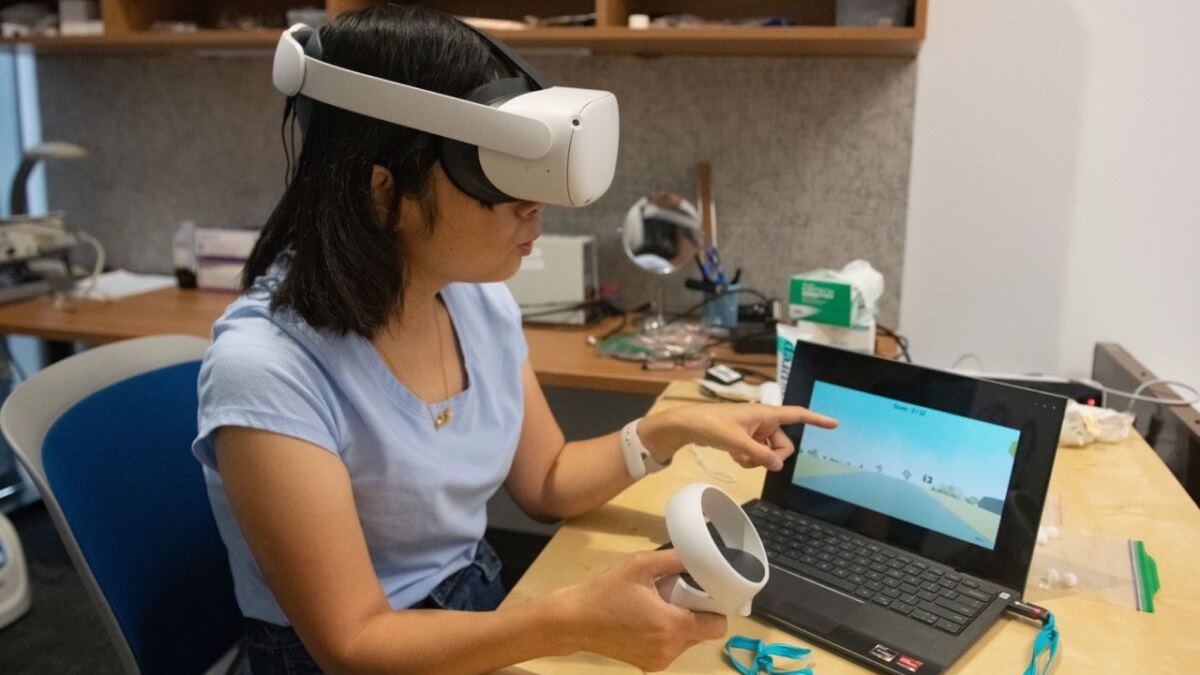Researchers at The University of Texas at Austin have developed a non-invasive EEG sensor integrated with a Meta VR headset. The sensor monitors the headset wearer‘s brain activity while interacting with immersive VR experiences. The research team uses its modified VR headset to gain insight into how people react to external forces such as stressors.
“Virtual reality is so much more immersive than just doing something on a big screen,” says Nanshu Lu, the project lead and professor at Cockrell School of Engineering’s Department of Aerospace Engineering and Engineering Mechanics. “It gives the user a more realistic experience, and our technology enables us to get better measurements of how the brain is reacting to that environment.”
Virtual reality headsets with an attached EEG sensor already exist. However, the research team claims their device is more comfortable than current options. Due to the increased comfort level, the research team states that their devices allow for more prolonged use, which means they can be used for more purposes.

The modified VR headset features spongey electrodes
Typical EEG sensors are rigid and inserted through the hair to connect to the scalp. This proves uncomfortable for the wearer. Researchers developed a soft electrode using conductive materials to make the sensor more comfortable.
“All of these mainstream options have significant flaws that we tried to overcome with our system,” says Hongbian Li, a research associate in Lu’s lab (pictured). The researchers attach these spongey electrodes to the VR headset’s forehead pad and top strap. An EEG recording device and a flexible circuit attach to the back of the headset.
According to the researchers, the modified VR headset can potentially help people with anxiety, measure the stress and attention levels of pilots using flight simulators, allow humans to see through the eyes of robots and much more.
To test the modified VR headset, the research team worked with brain-machine interface expert José del R. Millán to develop a game. The game simulates driving and users must press a button to turn when prompted. Using the game and the headset, researchers were able to observe the user’s current attention level.
Jack Brassell is a freelance journalist and aspiring novelist. Jack is a self-proclaimed nerd with a lifelong passion for storytelling. As an author, Jack writes mostly horror and young adult fantasy. Also an avid gamer, she works as the lead news editor at Hardcore Droid. When she isn't writing or playing games, she can often be found binge-watching Parks & Rec or The Office, proudly considering herself to be a cross between Leslie Knope and Pam Beasley.



































